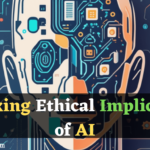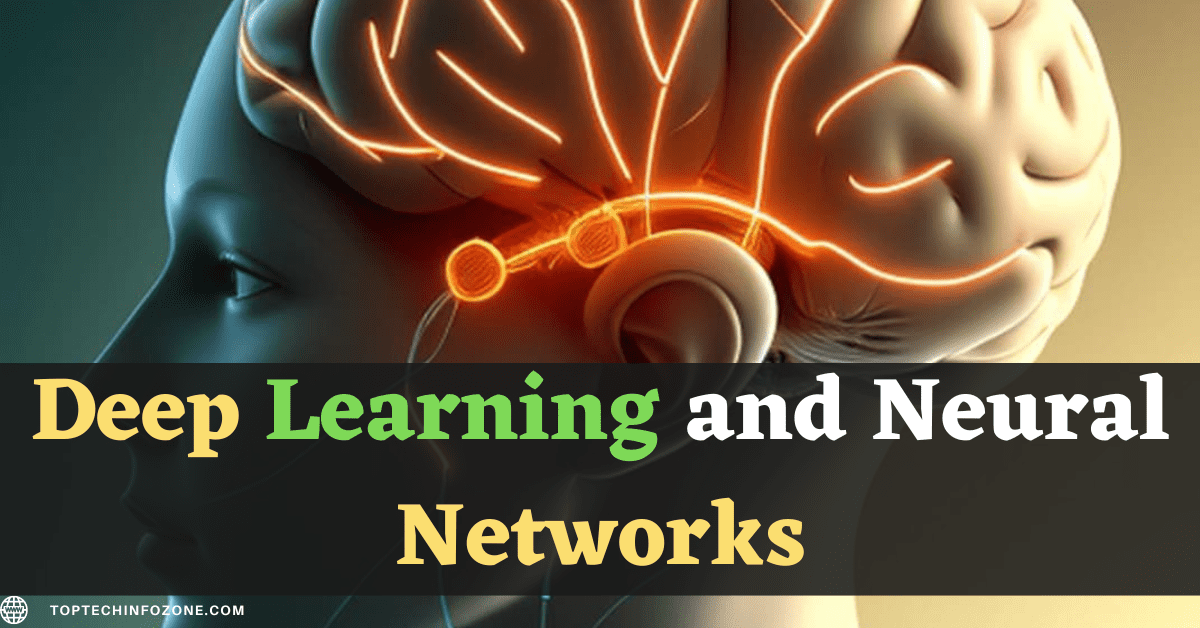Introduction to Deep Learning and Neural Networks
Deep Learning and Neural Networks is inspired by the structure and function of the human brain and aims to replicate its ability to learn and adapt. Deep learning is a subfield of machine learning that focuses on training artificial neural networks to learn and make predictions from large amounts of data. Deep learning algorithms have demonstrated remarkable success in various domains, including image and speech recognition, natural language processing, and autonomous driving.
Understanding Neural Networks
Neural networks are the fundamental building blocks of deep learning. They are composed of interconnected nodes, or artificial neurons, that process and transmit information.
Each node takes inputs, applies weights to them, performs a mathematical operation, and passes the result to the next layer of nodes. This process continues until the final output is generated.
Neural networks consist of multiple layers, including an input layer, one or more hidden layers, and an output layer.
The hidden layers enable the network to learn complex representations of the input data, extracting relevant features automatically.
The weights of the connections between nodes are adjusted during the training process, allowing the network to optimize its performance.
Applications of Deep Learning and Neural Networks
Deep learning and neural networks have found applications in various fields. Some notable examples include:
Image and Speech Recognition
Deep learning algorithms have revolutionized image and speech recognition tasks. Convolutional neural networks (CNNs) are particularly effective in analyzing and classifying visual data.
They have been used in applications such as facial recognition, object detection, and self-driving cars.
Natural Language Processing
Neural networks have significantly improved the performance of natural language processing (NLP) systems.
Recurrent neural networks (RNNs) and transformer models have been employed for tasks like machine translation, sentiment analysis, and chatbots.
Healthcare and Medicine
Deep learning techniques are being applied in healthcare for medical image analysis, disease diagnosis, and drug discovery.
Neural networks can analyse medical images such as X-rays, MRIs, and CT scans to detect abnormalities and assist in diagnosis.
Finance and Trading
Deep learning has made an impact in the financial industry by enhancing trading strategies and risk management.
Neural networks can analyse large volumes of financial data, identify patterns, and make predictions for stock prices, market trends, and credit risk assessment.
4. Advantages and Challenges of Deep Learning
Advantages
- Highly Accurate Predictions: Deep learning models can achieve state-of-the-art performance in various tasks, surpassing traditional machine learning methods.
- Automatic Feature Extraction: Neural networks learn to extract relevant features from raw data, eliminating the need for manual feature engineering.
- Handling Large and Complex Data: Deep learning is effective in handling massive amounts of data, including unstructured data like images, audio, and text.
- Ability to Learn from Unlabelled Data: Deep learning models can learn from unannotated data, making them versatile in scenarios where labeled data is scarce.
Challenges
- Computational Resources: Training deep learning models requires substantial computational power and memory, often necessitating the use of specialized hardware like GPUs.
- Data Requirements: Deep learning models typically require large amounts of labelled data to generalize well. Acquiring and labelling such data can be time-consuming and expensive.
- Interpretability: Neural networks are often considered black boxes, as their decision-making process can be challenging to interpret and explain.
- Overfitting: Deep learning models are prone to overfitting, where they perform well on training data but fail to generalize to unseen data. Regularization techniques are employed to mitigate this issue.
Conclusion
Deep learning and neural networks have revolutionized the field of machine learning, enabling computers to tackle complex tasks with remarkable accuracy. From image recognition to natural language processing, the applications of deep learning continue to expand across industries. Understanding the principles and potential of deep learning is essential for anyone interested in the future of artificial intelligence and data science.
Frequently Asked Questions (FAQs)
Deep learning is a subset of machine learning that utilizes artificial neural networks to learn and make predictions from large datasets. It enables computers to perform complex tasks by automatically learning representations of data.
Neural networks consist of interconnected nodes that process and transmit information. Each node applies weights to the inputs, performs calculations, and passes the result to the next layer. Through an iterative training process, neural networks learn to optimize their performance by adjusting the weights.
Deep learning has applications in various domains, including image and speech recognition, natural language processing, healthcare, finance, and many more. It has enabled advancements in autonomous driving, medical diagnosis, and language translation, among other areas.
Deep learning offers highly accurate predictions, automatic feature extraction, the ability to handle large and complex data, and the capacity to learn from unlabelled data. These advantages make it suitable for solving complex problems in different industries.
The challenges of deep learning include the need for significant computational resources, acquiring large amounts of labelled data, interpreting the decision-making process of neural networks, and mitigating the risk of overfitting.
Related Posts:
- Unlocking Ethical Implications of AI: Unveiling Unforeseen Consequences (2023)

- AI in Finance: Predictive Analytics and Fraud Detection (2023)

- Chatbots and Virtual Assistants: Enhancing Customer Experience (2023)

- AI and Robotics: Transforming Industries (2023)

- The Role of AI in Cybersecurity and Threat Detection (2023)

